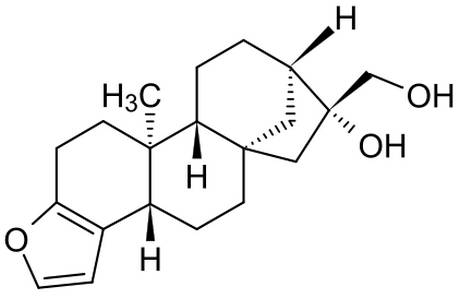Time for coffee and tea
Caffeine - A look at what makes up coffee
Coffee and Health
Recommended Pages
Coffee Constituents: Caffeine, Chlorogenic Acid, LDL Cholesterol
There are many compounds in coffee that are often thought to have implications upon human health; these include Caffeine, micronutrients, LDL cholesterol and chlorogenic acid.
Caffeine
One of the most well known compounds is coffee is Caffeine, and a picture of caffeine is shown below, the full name of this coffee constituent is 1, 3, 7- trimethylanthine and it is a purine alkaloid.
It is known that caffeine exerts most of its effects in coffee drinkers through the antagonism of subunits of an adenosine receptor. Adenosine has an inhibitory role in neuron-modulation; the consumption of coffee therefore leads to a stimulatory effect due to an increase in caffeine levels. Some of the physiological affects that consumption of caffeine is know to have included elevated blood pressure, an increase in ones metabolic rate and stimulation of the central nervous system.
Diagram of Caffeine

Analysing Caffeine Levels in a Cup of Coffee
One of the problems of analyzing the implications of caffeine in people who consume coffee is the differences in caffeine quantities in a typical cup of coffee; this can vary in range from 58 to 75 mg in a typical espresso, and from 70 to 130 mg in a small coffee of 200ml. There is also great variety from day to day in the caffeine levels in a standard coffee served at a typical coffee house; in fact it is possible that caffeine levels may be twice as high in a standard cup of coffee consumed today from the same type of coffee consumed the day earlier.
Micronutrients
Another main group of coffee constituents are the micronutrients; some of the main ones found in coffee include potassium, magnesium, vitamin E and niacin amongst others. A coffee typically provides between two and five percent of the recommended dose of magnesium and around two percent of the required potassium.
Kahweol and Cafestol (LDL Cholesterol)
The consumption of coffee has often been associated with an increase LDL cholesterol in serum levels. However, this does not hold true in all cases. The reason for this is thought to be the brewing method used. In countries such as Sweden and Norway where coffee tends to be boiled the levels of LDL cholesterol concentration are increased, whereas in countries such as Italy and the USA where people tend to drink filtered coffee this increase in cholesterol levels is not as prominent. The main cholesterol raising substances in coffee are kahweol and cafestol. The reason that these diterpenes are present in boiled (up to 12mg per cup) but not as high in filtered coffees (around 0. 4mg per ml) is that they are removed by filtering mechanisms. A cup of espresso typically has an intermediate level of diterpenes as a consequence of the small serving size. It is known that the consumption of kahweol and cafestol leads to increased LDL cholesterol, this occurs due to an increase in cholesterol ester transfer protein activity.

Cafestol, a molecule linked to the inhibiting progressive Parkinson's disease is found in abundant amounts in brewed coffee image: by Wikimedia.
Chlorogenic Acid
This important group of dietary phenols is produced when esters form between guinic and trans-cinnamic acids. Coffee is the major source of this dietary contributor, with a small cup having as much as 300 mg of chlorogenic acid. Around 65% of ingested chlorogenic acids are metabolized in the colon, and converted into caffeic and guinic acid. It is thought that both of these acids have antioxidant properties.
This section has introduced the compounds caffeine and chlorogenic acid, further details of how these affect health are available within this health section of time for coffee and tea.